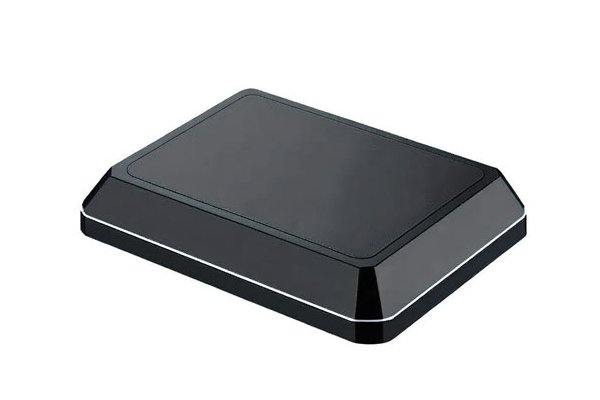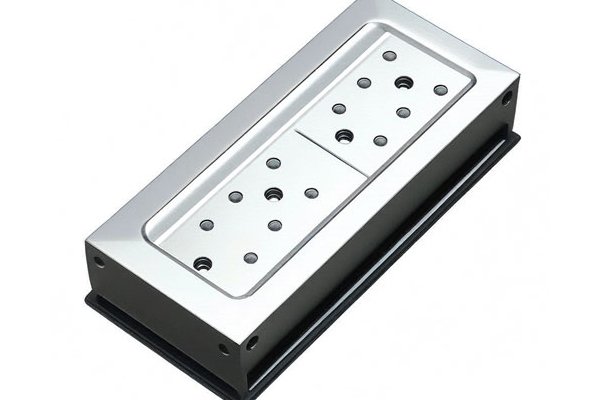When you think about precision and perfection in manufacturing, what comes to mind? Perhaps images of meticulously crafted parts, or machines that operate with such precision that they can create components to the smallest of tolerances. In today’s article, we’re diving into the fascinating world of CNC turning and milling. This innovative technology has not only revolutionized manufacturing but has also set the stage for higher standards in quality and efficiency. If you’re curious about the secrets behind high-precision CNC turning and milling, or simply looking to deepen your understanding of manufacturing processes, then you’re in the right spot!
What is CNC Turning and Milling?
Let’s start at square one. What exactly do we mean when we talk about CNC turning and milling?
CNC, which stands for Computer Numerical Control, is a technology that employs computers to control machine tools like lathes, mills, routers, and grinders. Picture it as the conductor of an orchestra, directing a cohesive unit to create a masterpiece. In CNC turning, material is turned against a cutting tool to produce symmetrical objects, like cylinders. Imagine a potter spinning a pot on a wheel; the potter’s hands act like the cutting tool, shaping the clay as it revolves.
On the other hand, CNC milling involves moving a workpiece against a rotating cutter. Think of it as a chef chopping vegetables: as the knife moves back and forth, it slices through the ingredients. This method is ideal for producing complex shapes and contours in various materials.
The Importance of Precision in CNC Machining
Precision isn’t just a nice-to-have; it’s a must in modern manufacturing. But why is it so crucial? Well, let’s break it down.
Imagine a car engine to which you’re trying to fit all the pieces together. If even one component is off by a fraction of a millimeter, it can lead to catastrophic results, including reduced performance or even engine failure. Therefore, CNC turning and milling offer tolerances of ±0.001 inches or better, ensuring every part fits together perfectly without any fuss.
Moreover, high precision in CNC machining contributes to reduced waste and rework. It’s like playing a video game where you know exactly how to navigate each level flawlessly—less time lost means better production times and cost efficiency.
CNC Turning vs. CNC Milling: Key Differences
While both CNC turning and milling fall under the CNC umbrella, they serve different purposes and are suited for distinct shapes and forms. Let’s break down their differences:
So, you see, it’s not a matter of which is better—instead, it’s about knowing which tool to wield for the specific job at hand!
The Role of Tooling in CNC Operations
You might wonder: “What makes CNC machines so precise?” Well, the answer lies significantly in the tooling.
Think of tooling as the brushes used by an artist. Just as a painter selects specific brushes to create different strokes and textures, CNC operators choose tools based on the material type and desired outcome.
There are several types of cutting tools, including:
Additionally, it’s not just about the tool type. The material the tool is made from—carbide, high-speed steel, or ceramic—can also affect precision. This brings us to yet another exciting factor: tool wear.
Understanding Tool Wear and its Impact on Precision
Tool wear is a natural phenomenon in any machining process, but it can significantly affect precision and quality. Imagine a knife losing its sharpness; each cut becomes less effective.
Tool wear can occur due to various reasons, including the type of material being cut, cutting speed, feed rate, and even coolant usage. As the tool wears, it may produce parts that don’t meet the exact specifications, leading to poor quality and increased costs.
To mitigate this, manufacturers often implement regular tool inspections and replacements, as well as optimize machining conditions so that wear occurs at a manageable rate—just like a gardener who prunes her plants at the right time to encourage healthy growth.
The Impact of CNC Technology on Industry
Let’s pivot a little and explore how CNC turning and milling have truly transformed various industries.
From aerospace to automotive, and even medical technology, CNC machining is everywhere!
Is it any wonder that CNC technology has become the cornerstone of modern manufacturing?
Achieving High Precision: Best Practices
Now that we’ve laid down the groundwork, let’s talk about how manufacturers can achieve and maintain high precision in their CNC operations.
7.
Regular Maintenance and Calibration
Just like a car needs regular oil changes to function smoothly, CNC machines require routine maintenance and calibration. This helps ensure that every part remains in top condition. Technicians should schedule inspections, adjust gantries and alignments, and replace worn parts.
7.
Optimal Cutting Parameters
Selecting the right cutting parameters is crucial. Factors like feed rate, spindle speed, and depth of cut can all affect precision. Imagine trying to cut a cake with a dull knife; it just won’t yield the clean edges you desire!
7.
Quality Materials
Utilizing high-quality raw materials is essential. Just as you wouldn’t bake a cake using subpar flour, manufacturers need to source reliable alloys and substrates to guarantee precision machining outcomes.
7.
Advanced Technologies
Employing advanced technologies like adaptive controls can also improve precision. These smart systems can adjust machining parameters in real-time, adapting to variations and ensuring consistent output.
The Future of CNC Turning and Milling
As we look to the horizon, the future of CNC turning and milling is nothing short of exciting. With advancements in automation, artificial intelligence, and robotics, we can expect even greater efficiencies and precision in manufacturing processes.
Imagine a world where CNC machines work alongside human operators, seamlessly integrating data to predict wear and optimize performance. This could lead to shorter production cycles, lower costs, and even higher quality products.
Conclusion: Embracing Precision in Manufacturing
So, what are the secrets behind high-precision CNC turning and milling? It’s a combination of technology, expertise, and a commitment to quality. As manufacturing continues to evolve, staying informed about these advancements will keep you ahead of the curve.
As you reflect on this article, think about the potential of precision in your own world—whether in your professional life or personal projects. By embracing these principles, you not only ensure better outcomes but also inspire those around you to appreciate the artistry and science behind manufacturing.
Are you ready to take a deeper dive into CNC technology? Feel free to ask questions or share your thoughts in the comments! The journey to precision is an ongoing adventure, and every inquiry leads us closer to mastery. Happy honing!





